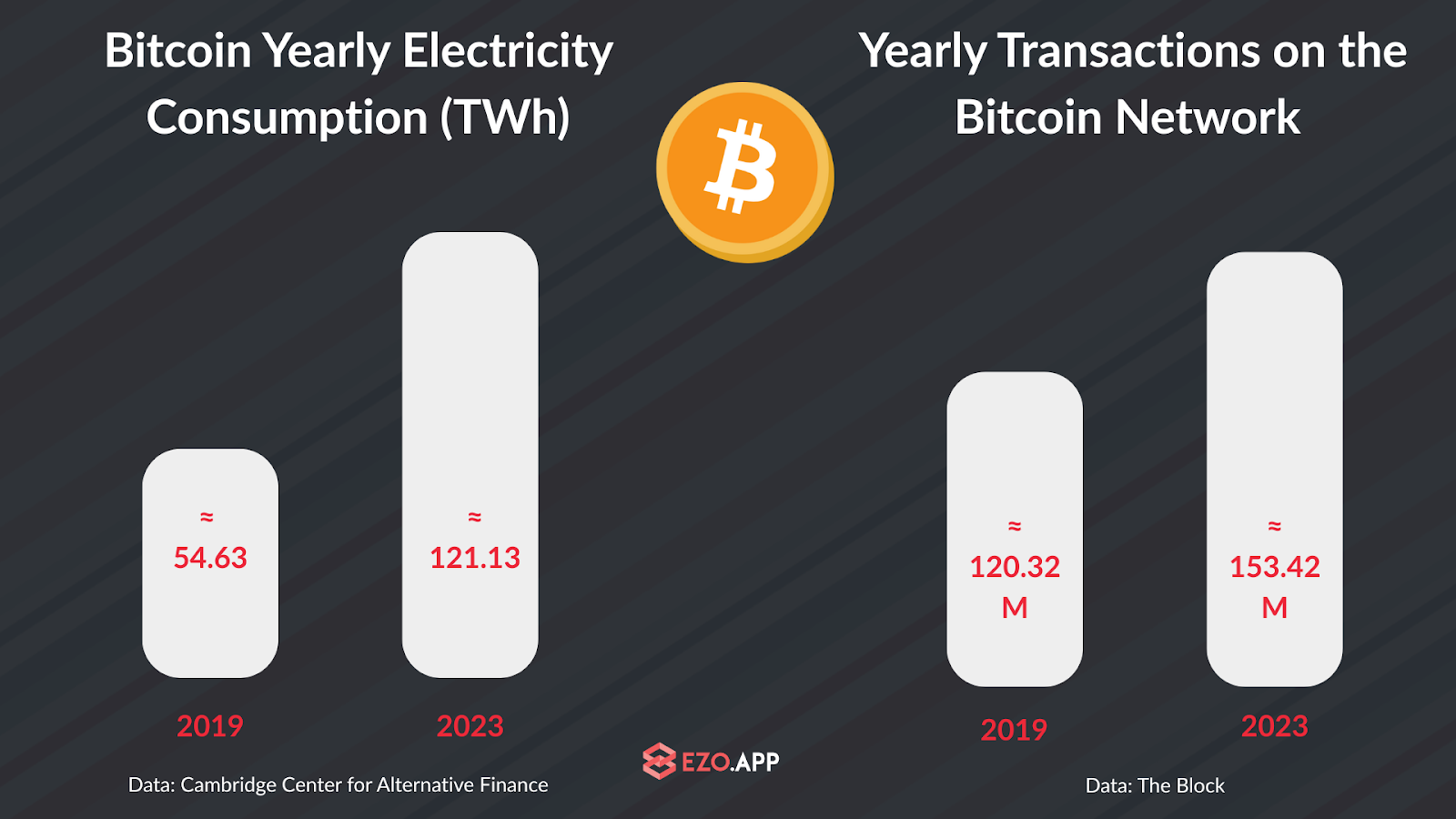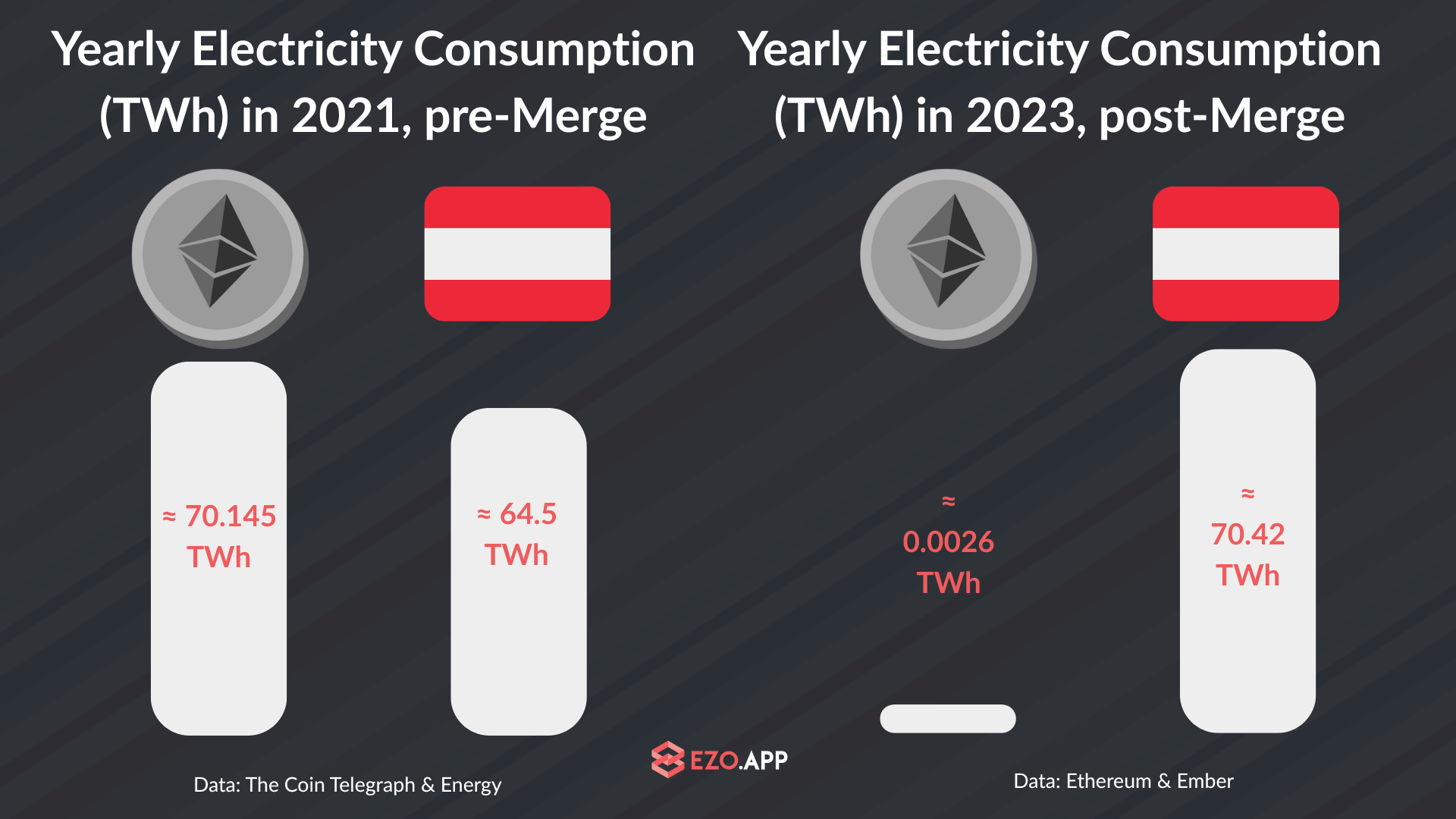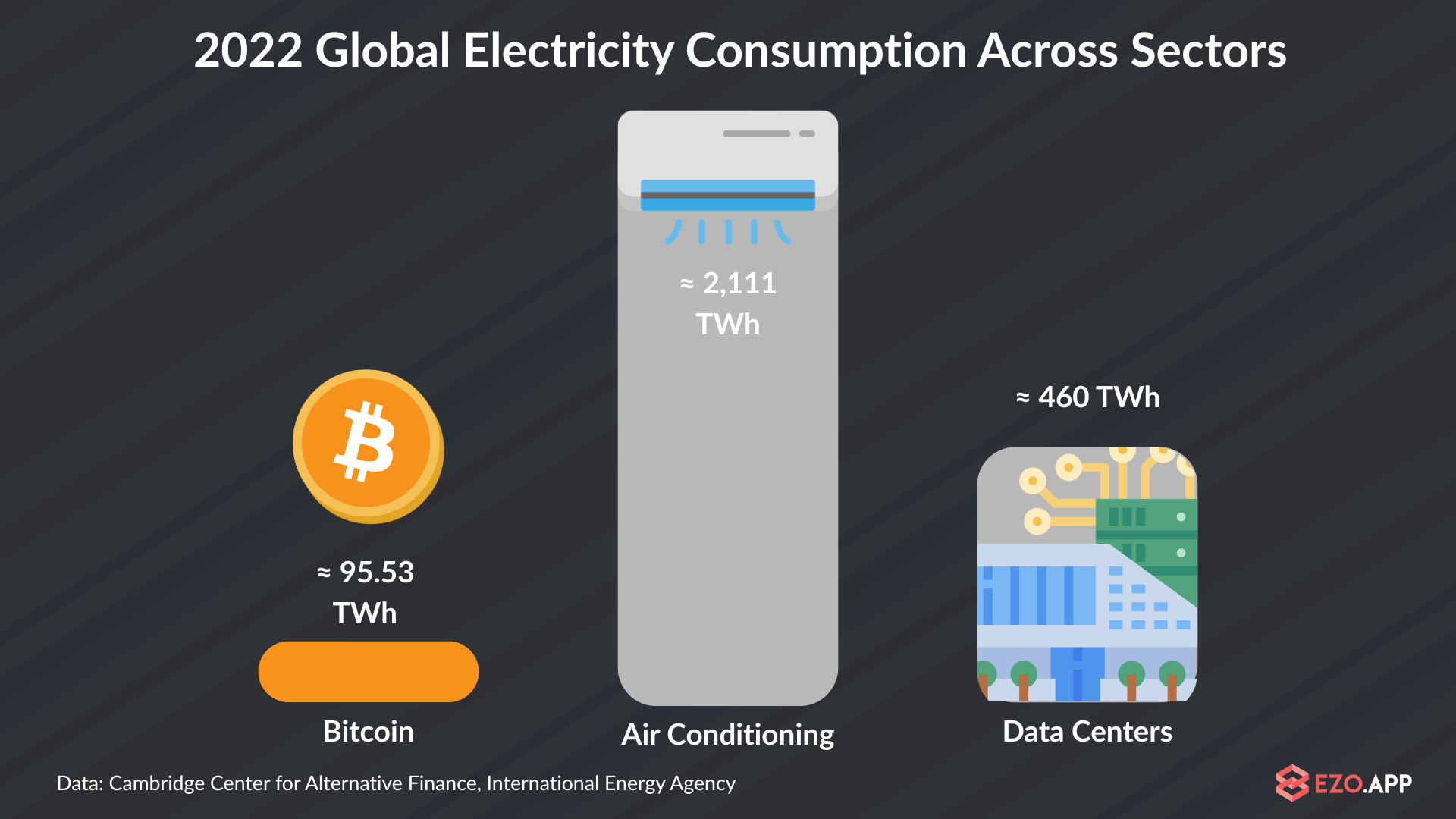The Green Evolution of Cryptocurrency: Efficiency, Sustainability, Crypto Global Impact and its Future
The green evolution of cryptocurrency combines energy efficiency, sustainability and financial inclusion to shape the future of digital finance.

Since the mining of the first bitcoin, cryptocurrency has continuously evolved: from the rise of early altcoins and the creation of smart contract platforms like Ethereum, to the development of stablecoins. Enhancing energy efficiency and minimizing environmental impact is the natural next step in the ongoing innovation that has carried cryptocurrency to its present stage—and will long continue to shape its future.
Alongside countless technological innovations, the industry has continuously worked to become more energy-efficient and mindful of its environmental footprint. This article explores how the cryptocurrency industry has addressed the criticism of its energy consumption and carbon emissions through consensus mechanism shifts, its layered architecture, more efficient hardware, green mining and industry activism. We go even further by comparing the cryptocurrency industry to other sectors with similar energy profiles, while also examining its human impact—particularly its role in promoting global financial inclusion.
In Sum
- The cryptocurrency industry is evolving toward sustainability through consensus mechanism changes, layered architectures, efficient hardware and renewable energy adoption.
- Consensus mechanism innovations like proof of stake (PoS) are making blockchain networks far more sustainable, enabling high security with minimal energy consumption.
- Innovations in mining hardware, renewable-powered operations and the use of blockchain for carbon tracking are driving crypto’s greener transformation.
- While high energy demands remain, cryptocurrency empowers global financial inclusion, particularly in countries with unstable economies, and industry initiatives aim for net-zero emissions.
In Numbers
- Bitcoin currently consumes about 206.8 TWh of electricity per year, roughly the same as a medium-sized country.
- Ethereum’s 2022 Merge cut its energy consumption by 99.84%, dropping from nearly 90 TWh to just 0.0026 TWh annually.
- Modern ASIC mining hardware now uses only 15–20 J/TH, compared to early CPU miners’ 5,000,000 J/TH, marking a massive leap in efficiency.
- Between 36.7% and 50% of Bitcoin mining operations are now powered by renewable energy sources.
Consensus Mechanism Shift
Blockchain: What Is A Consensus Mechanism?
Blockchain can be thought of as akin to a bank’s internal ledger, meticulously recording incoming, outgoing or internal transactions. The key difference between the two, however, lies in who owns and controls the database. While a bank’s ledger is controlled privately and held in a single centralized system, blockchain is decentralized across a network of nodes (computers) and openly accessible to anyone who wishes to consult it.
Blockchain uses cryptography to ensure the reliability of the data it contains, protecting it from external tampering.
Given that the blockchain is maintained by a distributed network rather than a single entity, one might wonder: how do all these independent participants agree on what the correct version of the data is? This is where consensus mechanisms come into play.
Consensus mechanisms are the rules that decide how transactions are validated and in what order blocks are added onto the chain. Consensus mechanisms have the role of ensuring a decentralized network can reach agreement on a single, shared source of truth, without relying on a central authority.
The vast scale of the operation can require immense amounts of electricity, influenced by the chosen consensus mechanism.
Two predominant consensus mechanisms exist: proof of work (PoW) and proof of stake (PoS).
Proof of Work: Mining Competition
Bitcoin mining is what gave cryptocurrency the reputation of being “environmentally destructive”—and indeed, it does consume significant amounts of electricity due to its proof of work consensus mechanism.
PoW consensus mechanisms are used because they are deemed highly secure due to the sheer magnitude of the network. Bitcoin requires high energy consumption, and it functions as such: the different computers constituting the network competing to solve a cryptographic problem. This process, called mining, rewards participants with new bitcoin until the supply cap is reached.
Once the mathematical problem has been solved and the block is added on the blockchain, the rest of the network validates this “work”. While validating is instant and requires little energy, the actual mining process of decoding is electricity-dependent, with chances for the successful decoding of a block directly correlated with the computational power alloted.
Proof of work (PoW) consumes significantly more energy than the alternative proof of stake (PoS) consensus mechanism. Its sustainability has improved over time, with a growing share of PoW mining operations now relying on renewable energy sources, reducing their environmental footprint. Estimates as to how much renewable energy is used to power bitcoin mining operations range between 36.7% and 50%.
Despite this, bitcoin mining operations continue to capture a significant amount of energy worldwide, with its electricity consumption comparable to medium-sized countries. As such, proof of work remains a highly energy consuming consensus mechanism. Additionally, Bitcoin is programmed to control the rate at which new bitcoins are minted, with each block taking 10 minutes to be added onto the blockchain. The network does so by adjusting mining difficulty every two weeks. Thus, Bitcoin consumes more energy as time goes on and more miners join the network.
Even with the gradual switch from fossil fuels to clean energy and the major improvements in mining hardware we are seeing in recent years, it is undeniable that Bitcoin’s growing computational demand continues to outpace the expansion of renewable energy use, resulting in sustained high energy consumption and ongoing environmental concerns. At the time of writing, Bitcoin consumed as much as 221.4 TWh per year in electricity.

Proof of Stake: Validation
Alternatively, proof of stake consumes far less electricity. Transitioning from a proof of work consensus mechanism to a proof of stake model could reduce electricity consumption by up to 99.84% in the case of Ethereum’s Merge. Blockchains that use proof of stake as a protocol include Ethereum, Cardano and Solana.
How does proof of stake consensus mechanism work? Instead of having different nodes competing against one another for the chance to confirm transactions and to add a block to the chain, one miner is selected based on their contribution, or “stake”. To be selected, these miners put their own assets down as collateral, locking them in the network. While proof of stake mechanism requires less resources than proof of work and is generally more efficient, it can lead to a form of centralization through wealth accumulation.
The only energy the proof of stake consensus mechanism consumes is the electricity it takes for each validator—which can be hosted on any personal computer—to remain connected and validate new blocks.
Other mechanisms exist, like delegated proof of stake, which is Tron’s consensus mechanism, or different hybrid models seeking to hit a balance between security and efficiency.
Solana uses a hybrid consensus mechanism combining proof of stake and proof of history (PoH) which creates an immutable sequence of timestamps, enabling it to be one of the fastest blockchains able to process over 65,000 transactions per second. Proof of history works as a cryptographic clock directly within the blockchain.
Additionally, because Solana relies on proof of stake, its energy consumption is very low compared to proof-of-work blockchains. The network purchases carbon and biodiversity credits on-chain in order to reduce its carbon footprint.
However, proof of work and proof of stake remain the two dominant approaches shaping the blockchain landscape today, as the validation mechanisms upholding the two most prominent crypto networks of our time: Bitcoin and Ethereum.
Ethereum’s Merge
Ethereum started out in 2015 using proof of work as a consensus mechanism. At the time, it was estimated that the network consumed anywhere between 46.31 TWh to 93.98 TWh per year. For comparison’s sake, its midpoint would be comparable to Austria’s 70.42 TWh national electricity consumption in 2023. In comparison, the Bitcoin network currently consumes about 221.4 TWh per year, or the equivalent of Thailand.

In 2022, Ethereum’s mainnet merged with a proof-of-stake consensus layer, created first as a separate blockchain, though the idea was always to integrate the two for scalability and sustainability. Post-Merge, Ethereum now averages 0.0026 TWh in yearly energy consumption—the equivalent of a small American neighborhood, with U.S. households using on average 10,791 kW) per year individually. Ethereum now prides itself in being a “green blockchain”.
Layering for Scale
Layer 1 is what is known as a blockchain, forming the base of a multi-layered architecture. It is the foundational protocol on which everything else is built. Layer 1s handle things like consensus, as we discussed in the previous section, transaction validation and network security.
Not all chains that people call blockchains are considered Layer 1s. Arbitrum, for example, is a Layer 2-native blockchain platform built on top of Ethereum, which acts as its base blockchain. Layer 2 solutions like Arbitrum enable scalability and efficiency by increasing throughput and reducing congestion, much like adding additional lanes to a road.
Bitcoin’s Lightning network is another example. It offloads smaller transactions from the main blockchain by using payment channels that run off-chain, before eventually settling back on Layer 1.
To use the Lightning network, however, you need a Lightning-enabled wallet, since regular Bitcoin wallets only send on-chain transactions. Similarly, to use the Arbitrum platform, you need to add it as a network in your ETH wallet and bridge funds between the two. While the user experience on-chain and off-chain is different, both still tie back to the same secure L1 base layer.
Adding a secondary route for transactions to run off-chain makes for more scalable networks, which consumes less electricity per transaction. Rollups like Arbitrum batch transactions together, before settling them on-chain, which lowers both electricity use and transaction costs.
Similarly, the Lightning Network establishes off-chain payment channels that enable fast, low-cost transfers without placing additional load on the main chain. Since Lightning payments are not mined and only require a standard on-chain transaction when channels are opened or closed, they use far less energy overall. A single settlement on Layer 1 can account for hundreds or even thousands of Lightning payments, which dramatically reduces the average energy consumed per transaction compared to executing each one directly on Layer 1.
Cryptocurrency was not conceptualized with a layered architecture in mind. This framework emerged gradually through innovations over the past decade, evolving from the base protocol (Layer 1) to scaling solutions for more electricity-efficient transactions on Layer 2, and eventually to decentralized applications (dApps) operating on Layer 3, enabling users to interact with dApps through blockchain-based games like Axie Infinity for example.
More Efficient Hardware
We’ve talked about optimizing protocol design and blockchain software to address cryptocurrency networks’ impacts on the environment. Now, we turn to examine how hardware has evolved since the beginnings of crypto mining.
Early mining on normal desktop processors (CPU) and graphic cards (GPU) for each miner consumed 5,000,000 J/TH of computation, while today’s top application-specific integrated circuits (ASIC) operate at around 15–20 J/TH each. This represents an improvement of hundreds of thousands of times in energy efficiency. Specialized mining rigs and processors streamline modern bitcoin mining, maximizing output while minimizing power demands
For comparison’s sake, to solve a trillion cryptographic hash calculations, early mining hardware consumed enough energy to power a 100W lightbulb for about 14 hours—to do the same thing, modern mining devices each only needed 0.15 seconds.
Innovations in technology hardware have contributed to more efficient energy use. Specialized mining rigs and processors streamline modern bitcoin mining, maximizing output while minimizing power demands.
In addition, practices like immersion cooling and waste heat reuse allow miners to do more with less, reducing energy waste and improving sustainability. These advancements not only lower operational costs but also help address environmental concerns by making mining operations cleaner and more energy-conscious.
Leveraging Crypto for the Environment
Sustainable Mining: From Carbon Emissions to Grid Stability
Renewable energy, from natural resources with continuous supply like water, solar power or wind, is increasingly being used by crypto miners to power their operations and reduce carbon emissions by curtailing non-renewable energy sources.
For cost-efficiency and in an effort of sustainability, crypto mining tends to concentrate in countries rich in renewable resources like hydropower, including Norway, China and certain regions of Canada where electricity is cheap and abundant.
Using renewable energy to power operations reduces the environmental impact of cryptocurrency networks by lowering carbon emissions, minimizing reliance on fossil fuels and helping integrate excess renewable capacity into the grid.
In the United States, for example, Texas produces by far the most renewable energy, with renewable generation estimated at about 139.3 TWh in 2022. It is not a coincidence then, that Texas has been observed to be the largest U.S. state for cryptocurrency mining.
A KPMG report found, moreover, that bitcoin mining using renewable energy can incentivize the inclusion of renewable energy into electric grids. A study similarly examined the claim that bitcoin mining could improve the capacity of renewable energy. They found that it does indeed: mining has been linked to increases in renewable capacity and energy generation. The study notes that overall emissions can still rise, but with demand response—adjusting electricity use to help balance the grid and reduce stress during peak demand or renewable shortfalls—, mining overall emissions impact is moderated.
And indeed, increasingly, bitcoin mining is used by grid operators to help match supply and demand for electricity, a vital responsibility. When demand for electricity gets too high and the grid fails, blackouts happen which can rapidly become dangerous. Bitcoin mining rigs can quickly liberate electricity in times of high demand, preventing damage to electric grids and cities. As such, bitcoin mining represents a much more ecological alternative than the gas peaker plants traditionally used to fulfill that role of supplying electricity during periods of peak demand.
In other cases, miners even utilize stranded or surplus energy that would otherwise go to waste, further aligning cryptocurrency mining activity with sustainability goals. For example, where natural gas produced by fracking usually goes to waste, bitcoin mining companies take the opportunity to put that energy to use by absorbing it to add value to an industry worth over $4 trillion and which can empower millions living in inflation-heavy countries to participate in a worldwide economy.
On the other hand, the heat produced by bitcoin mining can itself be repurposed—many companies have seized the opportunity to offer bitcoin mining-powered heaters, with the potential of saving families around the world hundreds in electric bills as well as sustainable energy solutions.
Leveraging Smart Contracts for Climate Action
Beyond financial applications, blockchain technology is being explored as a tool for climate mitigation. Smart contracts—automated programs running on top of blockchain networks—can be designed to automatically purchase or retire carbon credits, offsetting the emissions linked to transactions or smart contract executions.
Toucan Protocol, built on Polygon, for example, has as their mission to explore how Web3 technology can help address the climate crisis. They offer smart contract products like the Toucan Carbon Bridge, bringing verified carbon offsets on-chain as tokens, and the Toucan Carbon Pools which group these tokens together by quality and attribute. In effect, this creates the foundation for an on-chain carbon credit ecosystem to evolve.
Toucan’s infrastructure can be integrated into other protocols such as KlimaDAO, which uses these carbon tokens to build a decentralized climate-positive economy. Together, they demonstrate how decentralized finance (DeFi) tools can direct more capital into carbon markets and climate projects.
This is a new opportunity that has the potential to grow as Web3 solutions become seen as prospect tools for climate action.
Thinking Relatively: The Global Impact and Opportunity Cost of Cryptocurrency
These developments reflect the determination of the industry’s thinkers and builders to continuously evolve and improve. Yet, for those less immersed in the world of cryptocurrency, a natural question arises: is all this effort truly worth it? Could the energy devoted to maintaining these blockchain networks be directed toward something more immediately beneficial?
Global Comparisons
It is often said that Bitcoin consumes as much electricity as a medium-size country like Thailand—that much is true, yet this comparison tends to be done in absolute terms. The network is hosted across nodes known as miners all around the world investing computational power. Thus, Bitcoin runs off electricity as a primary energy source.
While it is true Thailand consumes electricity at a similar level than the Bitcoin blockchain, it utilizes energy from other sources like oil for transport and natural gases for its industries. In 2023, Thailand consumed 224.04 TWh in electricity, but 1,388 TWh in total energy consumption, while Bitcoin currently consumes 206.76 TWh per year.
Comparing blockchain networks energy consumption to that of countries is common yet somewhat misleading—whereas the Bitcoin network runs entirely on electricity and fulfills a single purpose, countries are more multi-faceted. Their energy consumption goes towards anything from manufacturing to heating.
Similar single purpose industries that run off electricity make for better comparison. For example, the latest data for air conditioning global electricity use indicate 2,111 TWh in yearly consumption, much higher than Bitcoin’s.
Bitcoin’s energy profile can also be compared to that of global data centers, which consumed an estimated 460 TWh globally in 2022: both are entirely electricity-driven systems that convert electrical power into computation. The key difference is that data centers perform a wide range of tasks—serving billions of users—while Bitcoin’s computations serve a single purpose: securing its decentralized network.

Yet air conditioning and data centers’ impacts on people is undeniable: the first serves millions across the globe by preventing heatstrokes in a warming climate and the second draws connections all around the world via the Internet. What impact does cryptocurrency have on the world?
The Impact of Cryptocurrency
While the practical impacts of cryptocurrency might be underestimated in countries with developed financial infrastructure and stable currencies like Canada, millions of people across the globe already use cryptocurrency as a lifebelt when government economic crackdowns and rapidly devaluating currencies affect their ability to afford the things they need the most.
Looking at cryptocurrency adoption rates, in 2025, nations in Asia-Pacific, Latin America and sub-Saharan Africa surpass North America and Europe in regards to crypto activity growth rate, though the latter two still dominate in absolute terms.
Countries where crypto adoption rates are highest are diverse in profiles: emerging economies and developed countries alike are increasingly finding use for cryptocurrency. Countries with large unbanked populations like Vietnam, Indonesia and the Philippines boast high cryptocurrency use rates, signalling, according to CoinLedger, crypto’s growing role as a parallel financial mechanism compensating for institutional banking failures.
At the same time, other countries like the United States, Singapore and UAE show both strong crypto and traditional financial institution adoption. This highlights the multifaceted appeal of crypto—serving as both an alternative to unstable financial systems and offering strong potential for innovation in more mature economies.
Cryptocurrency Empowers
While cryptocurrency does consume a notable share of the world’s energy resources, it also delivers substantial benefits to communities across the globe. At its core, cryptocurrency was created to empower individuals and provide financial freedom beyond the constraints of centralized, government-issued currencies. By promoting innovation and enabling participation in a truly decentralized economy, cryptocurrencies are helping to reshape the way people interact with money and financial systems worldwide.
Cryptocurrencies like bitcoin serve as inflation hedges in countries facing massive hyperinflation and currency devaluation. Stablecoins similarly allow people to preserve purchasing power to cover their basic needs while their local currency and prices climb exponentially.
For example, countries like Nigeria and Argentina have in recent years faced both hyperinflation and currency devaluation as well as forms of currency control limiting their inhabitants’ access to foreign currencies like the USD. For many, currency controls significantly limit opportunities—for example, Nigerians who plan to file immigration documents face problems accessing USD to pay for them. In such cases, stablecoins have enabled people to access international currencies easily, often through the convenience of their mobile phones.
They additionally have great potential to provide liquidity access in places where friction currently costs individuals more than it benefits them, as well as enabling efficient local and global payments—anything from buying food at the market to sending near-instant remittances across the world.
It is true: cryptocurrency networks like Bitcoin do have a significant impact on the environment due to high energy consumption levels. However, it is equally important to consider those who stand to benefit from blockchain technology. Beyond the energy debate, blockchain has the potential to empower individuals and businesses around the world by promoting financial inclusion, reducing reliance on traditional banking systems and offering secure, transparent and innovative ways to store, transfer and grow wealth.
Industry Activism
Crypto Climate Accord (CCA)
Despite widespread criticism in recent years over the environmental impact of cryptocurrency mining, the industry—rooted in innovation—is making notable strides toward sustainability.
Drawing inspiration from the Paris Climate Agreement, more than 250 industry actors have signed on to the Crypto Climate Accord, a private-sector initiative aimed at achieving net-zero emissions from electricity use in crypto operations by 2030 and transitioning to 100% renewable power by 2025.
While, much like the Paris Agreement itself, these ambitious targets have yet to be fully realized, the Accord reflects a growing willingness within the industry to engage in climate action and work toward limiting carbon emissions.
Climate Chain Coalition (CCC)
The Climate Chain Coalition (CCC), backed by the United Nations Framework Convention on Climate Change (UNFCCC), is a group working to use blockchain technology to support climate action.
The coalition focuses on finding ways blockchain can help improve transparency and efficiency in climate projects, while also working to lower its own environmental impact.
The coalition’s work focuses on improving transparency, accountability and efficiency in climate-related projects. For instance, as we discussed in the previous section, blockchain can provide immutable records of carbon credit issuance and retirement, ensuring that offsets are verifiable and accounted for. At the same time, members are encouraged to explore low-energy blockchain models such as proof of stake and to integrate renewable energy sources in their infrastructure.
What Is Next?
Limiting Carbon-Intensive Power Sources
Despite ongoing efforts by industry actors to optimize efficiency and reduce carbon emissions, significant challenges remain. On one hand, sustainability practices have improved, but the rapidly increasing demand for blockchain activity has driven an increase in energy usage. Much of the industry still relies on carbon-intensive power sources, meaning that even with better practices, there is more work to be done.
Reducing Electronic Waste
On the other hand, energy efficiency has similarly improved with the use of modern mining ASICs, yet these chips have short life spans, creating electronic waste. It is to be noted though that 86.9% of decommissioned hardware is repurposed or recycled. In short, miners have taken commendable steps toward sustainability, with more opportunities ahead to build on this progress.
Limits of Change
While Ethereum's Merge effectively reduced the network’s energy consumption by over 99%, Bitcoin remains the cryptocurrency and network with the largest market share—BTC represents 57.9523% of the cryptocurrency market where ETH represents 13.1011%.
As the largest and most influential player, one could scrutinize Bitcoin over its reliance on proof of work, which emits significantly more carbon than its counterpart. However, a transition to proof of stake—similar to Ethereum’s after years of testing—remains highly unlikely in the near term.
The Bitcoin community is reluctant to adopt such drastic changes to its protocol, as the proof-of-work model has consistently demonstrated resilience, security and decentralization—qualities that form the foundation of the trust it commands today.
In conclusion, despite widespread criticism in recent years over the environmental impact of cryptocurrency mining, the industry—rooted in responsible innovation—is making notable strides toward sustainability. Though challenges remain, continuous efforts to improve efficiency, embrace renewable energy and adopt greener practices signal a promising path toward a more sustainable digital economy, one where financial inclusion and innovation go hand in hand.
Frequently Asked Questions
How does proof of stake make blockchains more sustainable?
Proof of stake eliminates competitive mining, selecting validators based on staked assets instead of computation. This reduces electricity consumption by over 99%, as demonstrated by Ethereum’s Merge.
Can cryptocurrency help the environment instead of harming it?
Yes. Miners increasingly use renewable energy, stabilize electric grids and repurpose waste heat. Smart contracts are also being used to support carbon offset and climate projects.
What global impact does cryptocurrency have beyond energy use?
Cryptocurrency provides financial freedom and access to global markets, helping people in inflation-hit or underbanked regions preserve value and participate in the digital economy.









